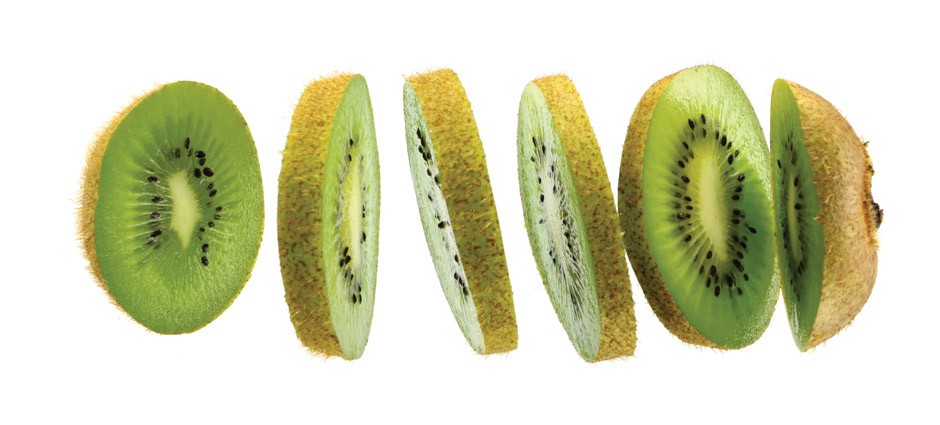Kiwifruit’s bright-green flesh is reminiscent of the green of spring—which is fitting, because this nutritious fruit (actually, berry) is fresh and in season from November to May. Read on to discover why, when and how to buy, store and enjoy delicious kiwis.
Why Eat Kiwis?
The most obvious reason: flavor. Kiwis are at once tart and sweet, juicy and refreshing (see below for ideas on how to eat them). Beyond taste, kiwis are little nutrient powerhouses. The two headliners are vitamin C—one medium kiwi delivers 117 percent of your daily needs—and vitamin K (38 percent in a medium kiwi), which helps with bone building and blood clotting, among other things. Kiwis also contain 9 percent of your daily fiber requirement, as well as lutein and zeaxanthin (for eye health), potassium and copper. Kiwis consistently appear on the Environmental Working Group’s Clean 15 list of the produce harboring the fewest pesticides.
Which Kiwis to Buy
Around the world, some kiwi varieties have smooth skin, but most sold in the U.S. are fuzzy. Avoid fruit that are wrinkly or bruised. Test for ripeness by gently squeezing the fruit between your thumb and forefinger. If it yields a bit, it’s ripe, which means sweeter and juicier; the firmer the fruit, the more tart it will be.
How to Store
Firm, uncut kiwis can be stored at room temperature for a few days to a week, or up to two to four weeks in the fridge. Ripe kiwis will last a few days on the counter or a few days to a week in the fridge.
How to Eat
- The California Kiwifruit Commission recommends slooping, a combination of slicing and scooping: Gently wash the outside of the kiwi, slice it in half, and scoop out the insides with a spoon. (This method makes kiwis a good on-the-go snack.)
- Other options include peeling and slicing, or slicing with the peel on and eating the whole thing. With any method, gently wash the outside first, which will remove a lot of the fuzz.
- Kiwis are an excellent fruit salad addition, but cut and mix in only as much as you’ll eat in one sitting; it will get too mushy if it sits for very long. You can also serve them on fruit pizza; in smoothies, lemonade or cocktails; atop salads or desserts (add just before serving); in fresh salsa or chutney; and more.
Kiwi Facts
- Kiwis derive their name from the fuzzy, brown New Zealand bird of the same name.
- Kiwis were introduced in the U.S. in the 1960s.
- Possible science-backed benefits of kiwi consumption include better digestive function, reduced asthma symptoms, improved sleep volume and quality, increased heart health and higher antioxidant activity.

